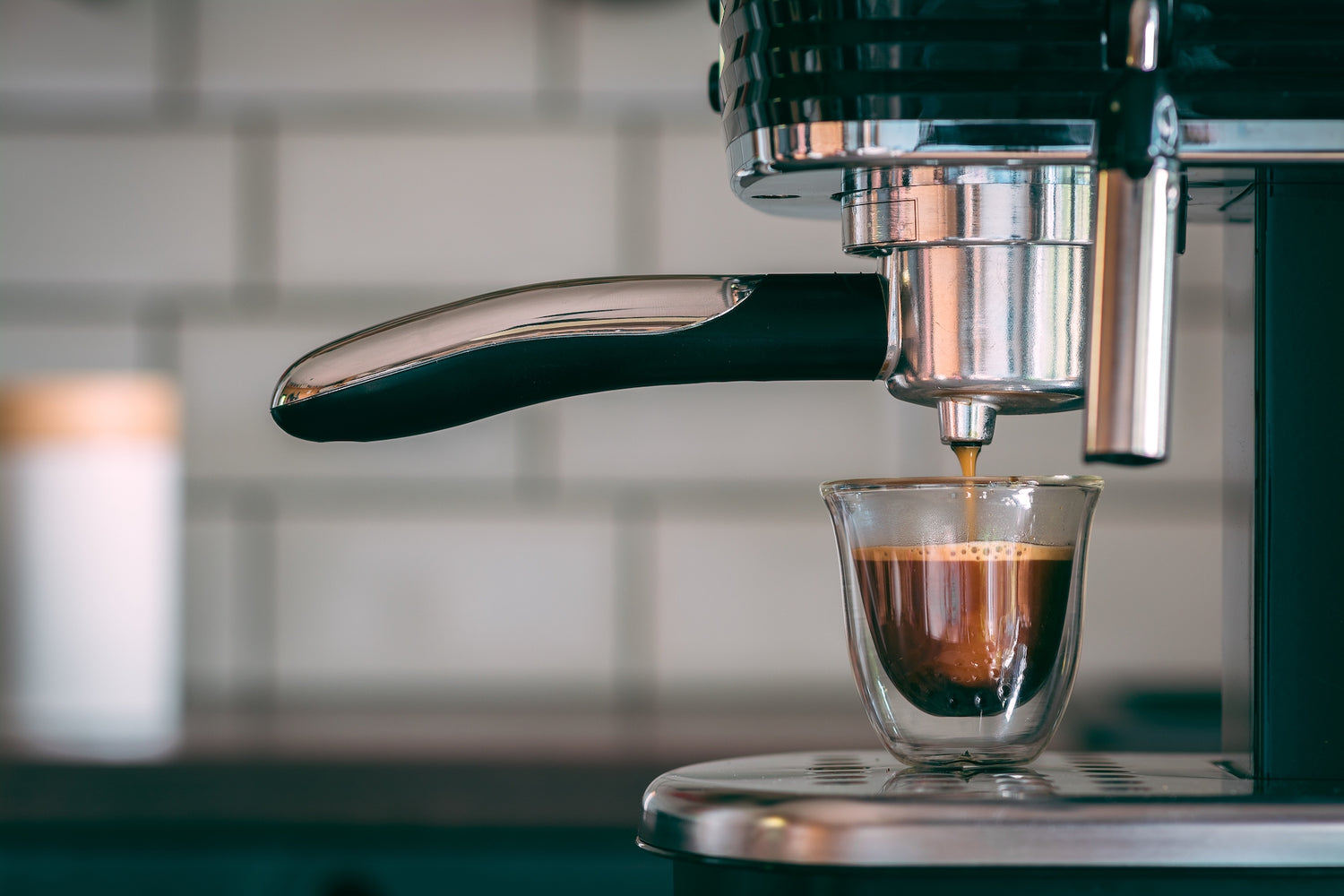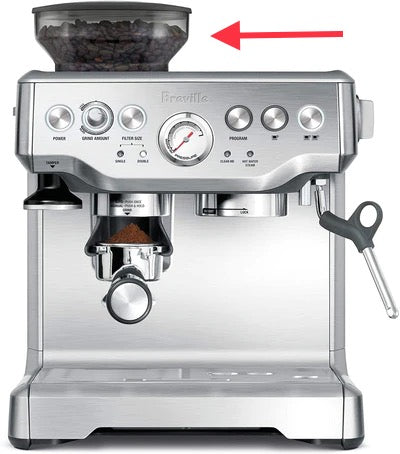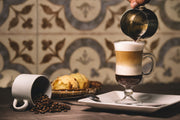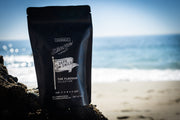All About Espresso Machines

How Espresso Machines Work
The simplest way to explain the function of espresso machines is this: Through the use of electrical pumps, modern day espresso machines transfer water from a tank to a boiler where a heat exchange system converts the water into steam. The highly pressurized steam is then forced through the ground coffee that is attached to the machine in a basket called a portafilter. The coffee and it’s flavor drizzle into the cup creating the creamy, bold and delightful coffee beverage we call “espresso”.
In 1822, a Frenchman named Luis Bernard Babaut created an espresso machine prototype using the steam brewing concept. Piggybacking off of Babaut, Edward Loysel de Santa created a machine in 1843. This machine was able to make a vast amount of coffee in a short time period, however the quality was terrible. This was due to several things, however mainly the fact that the machine lacked a way to regulate the internal temperature, causing it to have severe over heating issues.
Over the ages many people from various countries have enjoyed brewed coffee. However, it wasn’t until Angelo Moriondo, of Turin Italy, attempted to expedite the brewing process of coffee. In 1884, Moriondo patented the first espresso machine that used steam pressure to brewer coffee faster than the traditional methods, as well as providing a stronger dose. Although Moriondo had a great idea, he never commercialized his patent. It basically remained a secret due to his lack of promotion.
Luigi Bezzera is credited with taking Moriondo’s idea and turning it into a proper coffee brewing machine, a steam powered espresso machine. Bezzera basically revamped Moriondo’s patent, making it his own. Although Bezzera was able to create a masterpiece, he lacked the means to commercialize it. That’s when he teamed up with Desiderio Pavoni who supplied the funds that allowed them to bring the espresso machines to market.
In 1906, Bezzera and Pavoni attended the Milan Fair to showcase their espresso machine. They named it “Café Espresso”, which roughly meant “coffee at expressed speed”. The dual sold the idea that “steam equaled speed” and often compared espresso machines to trains, due to their speed and use of steam power.
The espresso machine caught the attention of Pier Teresio Arduino, a famous Italian businessman and marketer. He commissioned an artist named Leonato Capello, to create espresso machine posters, advertising the machines. Teresio was able to successfully market espresso machines with these posters, allowing him to export them to various countries.
The twentieth century brought about numerous variations and modifications to espresso machines. Dr. Ernest Illy is known was the inventor of the automatic espresso machine, while Afonso Bialetti invented the first ever stovetop espresso, the “moka pot”. Giovanni Achille Gaggia improved the steam pressure of the machines, furthering the brewing capabilities of espresso in 1948.
Tamping is an art as well as a key part of making that great shot of espresso, and a quality tamper can contribute to your success. Too much pressure during the tamping process can result in a bitter cup or not enough pressure can result in a watery shot. There won't be enough resistance in the grounds to impede the flow of the water. You will need to find the pressure that works well for you based on your grind setting.
Channeling, if your shot is channeling, the water from the machine isn’t being transferred through the puck and only through a smaller portion of the puck at a greater rate than the rest of the puck. Channeling is bad for a shot of espresso due to the lack of clarity of flavor in your shot of espresso (bitter). The crema of the shot will also have a different shade lighter if the shot is under extracted and darker if the shot is over extracted. From experience the perfect time for a shot is approximately 20-30 seconds.
Temperature, the temperature within the space the shot of espresso is being pulled plays a big role in how the espresso shot taste. For example with the weather is warmer such as spring and summer climates the shot being pulled will extract fast than a shot during winter. When the climate is dry it has the same effect on the shot if the grind size was too course. When climates are humid the beans will absorb more water from the air faster than on a dry day which will cause the shot to take longer. Listen to your taste buds… the taste of the coffee when calibrating your machine it will tell you whether you need a finer or coarser grind size. Depending on the environment, the shot you pull in the morning may be different due to the change of temperature in the environment throughout the day adjust to keep the best notes of the bean as the forefront and to have the perfect crema in your beautiful shot of espresso.
Crema
For the vast majority of espresso drinkers, Crema is used as a visual indicator of certain qualities of an espresso shot. A translation for the word 'cream' in French, crema is the natural lip of foam that is created due to pressure during the extraction process. Crema can be used to gauge the roast date of the beans at hand. The more foam that is created, the closer the beans roast date is to the current date. If less crema is the result of the shot the further out the roast date is. This is due to carbon dioxide exiting the bean over time after roasting, which generates less pressure during the extraction process. Crema is also a good indicator on the roast of the beans. The darker the crema, the darker the roast. The lighter the crema, the lighter the roast. The color of the crema can also dictate the strength of the pull. As you’ll notice darker crema tends to hold more bitterness than a lighter crema.

Espresso machine breakdown

Warming tray - usually found at the top of the espresso machine, the cup warming tray preheats the coffee mugs prior to brewing. This promotes temperature control of the brew.

Bean hopper - the bean hopper is a storage space on top of the grinder for the beans.

Dial - the dial is used to adjust the grind amount that is released into the portafilter from the bean hopper.

Tamper - the tamper is used to pack down the coffee grounds for even pressure distribution.

Portafilter - the portafilter has a couple of definitions. The portafilter is the basket that is used for catching and holding the coffee grounds. It is also the attachment for the group to produce the espresso shot.

Pressure gauge - the pressure gauge is a reader of how much pressure is being applied during the time of extraction.

Cup size buttons - the cup size buttons allow you to choose between a single or a double shot of espresso.

Steam wand - the steam wand is used for steaming and frothing milks.

Instant hot water outlet - the instant hot water outlet is a spout that pulls hot water from the water reservoir for drinks such as the americano.

Water reservoir - the water reservoir is the holding tank for the water needed throughout the machine's functions.

Steam dial - the steam dial gives the options of releasing hot water from the instant hot water outlet or releasing steam from the steam wand.

Grind size dial - the grind size dial is used to dictate how fine or coarse the espresso grounds will be.
Any beans by any means
An often misconception within the world of coffee is that there is a bean variant specified for espresso. This is completely false. No matter the roast, any bean can be used to pull an espresso shot. One of our favorites is our Ethiopian Shenta Wene Carbonic Maceration, which is roasted as a light medium. Brewed as espresso is a much different experience you’ll get if it were to be brewed by pour over. When using a lighter roasted coffee you’ll notice a lighter color of the crema and of the espresso shot itself. Don’t set limitations on the beans you use for espresso. If you love espresso, we invite you on this voyage to view espresso as a brewing technique and not as a roast of beans.



